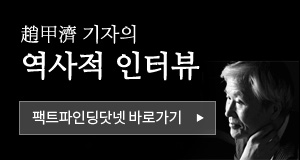AT THE close of 1945 the British Raj could congratulate itself. Despite growing impatience for independence, the empire had still managed to muster a 2.5m-man Indian army, the largest all-volunteer force in history. Indian troops had served loyally at home to crush an incipient insurrection in 1942. They proved crucial to British victories in Ethiopia, north Africa and the Middle East; in Burma they eventually inflicted the biggest land defeat ever suffered by the Japanese imperial army. India also contributed materiel and money: by the war’s end Britain owed its prized but impoverished colony £1.3 billion, an eighth of British GDP.
Yet the war was also catastrophic, both for the Raj and for India. The relatively small scale of India’s direct war casualties—some 90,000 soldiers killed in six years of fighting on three continents, 6,000 sailors lost and 1,400 civilians killed by Japanese bombs—belied far wider suffering. The Bengal famine of 1943, the prime cause of which may have been inflation fuelled by the printing of rupees to cover wartime deficits, left as many as 3m dead. Ignominious defeats in Malaya, Singapore and Burma undermined British prestige. Of the half a million Indian civilians who joined a chaotic exodus from Burma in 1942, perhaps one in ten also perished.〈The Economist May 5th 2016〉
1945년 말경에 대영 인도제국(the British Raj)은 스스로를 축하할 수 있게 되었다. 독립에 대한 점증하는(growing) 조급증에도 불구하고 제국은 여전히 역사상 최대의, 전원 지원병으로 편성된, 250만명의 인도인 군대를 소집할 수 있었다. 인도인 부대는 인도국내에서 1942년 초기의 반란군을 진압(crush)하기 위해 충성스럽게 참전(serve) 하였다. 그들은 Ethiopia와 북 아프리카와 중동에서 영국군의 승리에 결정적이었음을 증명하였다; 버마에서 결국 인도군은 일찍이 일본제국 군대가 입은 최대의 지상전 패배를 가하였다(inflict). 인도는 또 물자와 자금도 제공하였다. 전쟁이 끝날 때쯤 영국은 소중하지만 가난한 식민지(인도)에게 영국 국민총생산의 1/8에 해당하는 빚을 지고 있었다.
그러나 그 전쟁은 또한 인도제국은 물론 인도에게도 파멸적이었다. 인도의 상대적으로 적은 규모의 사상자―3개 대륙에서 6년간의 전투에서 전사한 90000명의 육군, 6000명의 해군 실종자, 일본군의 폭격에 죽은 1400명의 민간인―는 훨씬 더 광범위한 고난을 숨기고 있었다. 1943년에 있었던 Bengal지역의 飢餓(기아)는, 기아의 주된 원인은 戰時(전시) 재정결손을 카버하기 위하여 찍어낸 rupee화에 의해 불이 붙었을 것인데, 3백만 명 만큼 많은 사람을 죽게 하였다. Malaya와 Singapore와 Burma에서의 수치스러운 패배는 영국의 위신을 손상시켰다. 1942년 혼란스런 Burma탈출에 동참하였던 50만의 인도민간인들 중에서 아마도 10명 중 1명의 비율로 실종되었을 것이다.
* 해설:
영국의 식민지 시대에 인도인들은 영국이 수행하는 많은 전쟁에 영국군에 자원입대하여 싸웠다. 간디도 1900년 보아전쟁에 참전하여 훈장까지 받았고 1차 세계전쟁 때는 '입대 호소문'까지 만들어서 “군에 입대하는 것이 우리의 의무”라며 인도인들의 참전을 독려하였다. 150만의 인도인들이 영국군에 지원하였다. 간디는 2차 세계대전 동안에도 나치스와 싸우는 영국군에 '비폭력적, 도덕적 지원'을 한다고 선언하였다.
그러나 국민회의 일부 지도자들이 인도인 대표자와 상의 없이 영국이 일방적으로 인도의 참전을 결정하였다며 반발하자 간디는 숙고 끝에 “자유를 위해 싸운다면서 인도에게는 자유를 주지 않는 전쟁에는 참여할 수 없다.”고 선언하였다. 그러나 국민회의 당원들과 많은 정치집단이 나치 독일과 싸우는 영국을 지원하지 않는 것은 비도덕적이라고 비판하였다. 2차 세계전쟁에서 인도인 250만 명이 영국군에 자원입대하였다. 인도인들은 또 많은 물자도 지원하였다. 인도군은 北아프리카와 중동 전선에서 영국의 승리에 결정적인 역할을 했다. 인도군은 동남아시아 전선에서도 일본에게 史上(사상) 최대의 패배를 안겨주었다. 인도병사들의 영국 국왕에 대한 충성심도 대단하였다.
인도는 영국과 독립전쟁을 하지 않고도 영국의 축하를 받으며 독립하였다. 독립 후에도 영국과 사이좋게 지내고 있다. 인도는 영국 식민지였던 나라들의 친목단체인 英연방(Commonwealth) 창립에도 주도적인 역할을 했다. 영국 런던에는 간디의 동상도 있다. 많은 인도인들이 영국은 물론 과거 영국의 식민지였던 나라에서 공직자로, 기업인으로, 전문직등 사회의 각 분야에서 생업에 종사하고 있다. 현재 영국의 경제를 책임지고 있는 재무부장관도 인도계 영국인이다. 보건부장관도 인도인이다. 국회에도 인도계 의원들이 다수 있다.


















